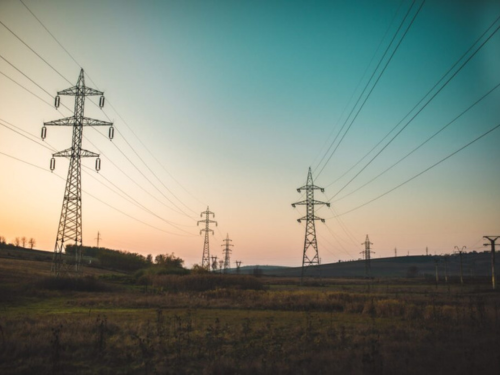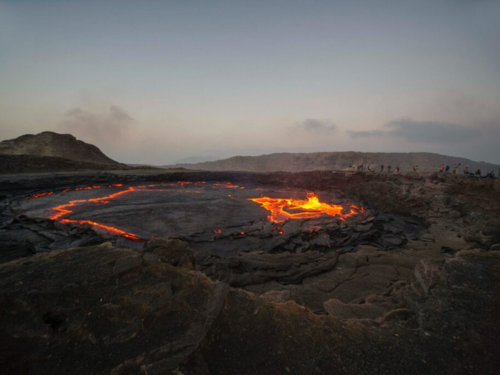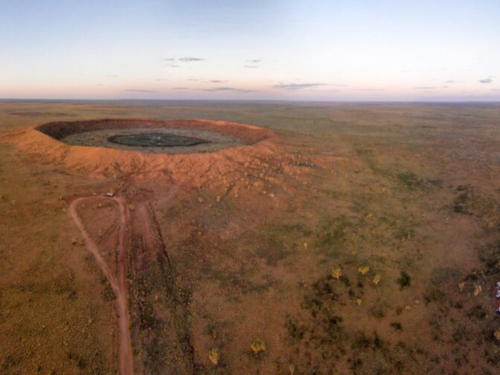
OpenSciEd High School Physics Units
The OpenSciEd initiative was launched to address a critical need in science education: the need for high quality science instructional materials that are standards-aligned and practical for broad implementation. BSCS Science Learning led the development of a one-year, high school physics course for free distribution.
The program’s classroom materials and associated teacher professional learning materials are:
- designed to align with the NRC Framework for K-12 Science Education and the Next Generation Science Standards (NGSS),
- based on research on student learning and teacher practice,
- developed in collaboration with teachers and field-tested in hundreds of classrooms in ten states across the United States,
- open-source and locally adaptable, and
- continuously improved based on feedback from teachers and field testing.
The complete high school physics program is now available for free download at OpenSciEd.
Learn more about the units below.
P.1 Energy Flow from Earth’s Systems

How can we design more reliable systems to meet our communities’ energy needs?
Unit Summary: This unit is designed to introduce students to the concept of energy transfer in a relevant and grounded context: the Texas power crisis of February 2021. Students read articles and wonder about the complex social, environmental, and physical realities that led to such a crisis. They figure out how energy transfers between systems from a generator to our communities, and what makes an energy source reliable. This allows the class to model and explain what happened in Texas at multiple scales, from the electrons in the wires to the power companies making difficult decisions to maintain stability. Students consider engineering tradeoffs, criteria, and constraints inherent in making decisions about our energy systems, and apply them in a culminating task: design a reliable energy solution that meets our communities’ needs, as articulated by interviews with friends and family members. The task is designed to give students the tools to speak up in their local and global community for a better energy future, one that aligns with their own values, and those of their families.
Learn more and download Energy Flow from Earth’s Systems.

P.2 Energy, Forces, & Earth’s Crust
How do forces in Earth’s interior determine what will happen to the surface we see?
Unit Summary: This unit is designed to help students build an intuitive understanding of the relationship between energy transfer and unbalanced forces as they explore science ideas related to plate tectonics, radioactivity, convection, and rock formation.
Students read about a crack that opened up suddenly in the Afar region of Ethiopia in 2005, accompanied by earthquakes and volcanoes. They compare this to other earthquake events that occur in North America. This prompts them to model the events that occurred before, during, and after the crack was discovered. They figure out that changes in the structure of matter involve unbalanced forces and energy transfer, and use this idea to explain earthquakes and volcanoes at plate boundaries. They explore Earth’s interior using tomography and modeling, including radioactivity, to explain the unbalanced forces driving changes in Earth’s crust. They then investigate the interactions happening at plate boundaries and the nature of the relationship between mass and forces on the movement of tectonic plates to explain the past, present, and potential future of the Afar region. Finally, students apply these ideas in a transfer task to explain why a rift similar to the rift in the Afar region failed to create an ocean in the middle of North America 1.1 billion years ago.
Learn more and download Energy, Forces, & Earth’s Crust.

P.3 Collisions & Momentum
What can we do to make driving safer for everyone?
Unit Summary: This unit is designed to introduce students to the concept of momentum and Newton’s second law in an intuitive and grounded context. The learning is anchored by a puzzling set of patterns in traffic collision data over time: while overall, vehicle fatalities have been decreasing steadily for decades, the trend appears to have reversed, with both collisions and fatalities increasing. This phenomenon provides the context in which to investigate the physical relationships among mass, velocity, momentum, force, time, and acceleration, basic physical quantities that provide the foundation for the study of mechanics. Students will analyze statistics on vehicle collisions, analyze the motion of vehicles stopping short, and model vehicle collisions as part of an engineering task to reduce the chances of injury in a collision by testing and evaluating solutions that could change force interactions in the system.
Learn more and download Collisions & Momentum.

P.4 Meteors, Orbits, & Gravity
How have collisions with objects from space changed Earth in the past, and how could they affect our future?
Unit Summary: This unit is designed to introduce students to the motion of objects in our solar system through the perspectives of matter, force, and energy. The learning is anchored by the appearance of a large fireball in the sky over Siberia in 2013 (the Chelyabinsk meteor). This phenomenon provides the context in which to investigate how and why objects from space sometimes collide with Earth. To figure this out, students apply the concepts of Newton’s universal law of gravitation, orbital motion, energy transfer with gravitational fields, and the history of Earth.
Learn more and download Meteors, Orbits, & Gravity.

P.5 Stars & the Big Bang
What do stars shine and will they shine forever?
Unit Summary: This unit is anchored by historical accounts of stars that suddenly appear and disappear shortly later. Students wonder about how some stars appear unchanging while these stars change so drastically within such a short period of time. That makes students wonder why stars shine and what could cause stars to change. They organize their questions regarding matter, energy, and forces and decide to look more closely at the places in the sky where these historical events took place using modern technology. In Lesson Set 1 (Lessons 2-5), students investigate photos and spectra of the remnants of these events and then develop two sets of research questions to investigate in small groups before coming together to come to consensus in Lesson 5 around the fusion and the lifecycle of stars. Students’ small-group internet research is scaffolded by a set of tools introduced strategically across the unit: the Planning for Obtaining Information Tool, the Obtaining Information Tool, and the Evaluating Sources of Information Tool.